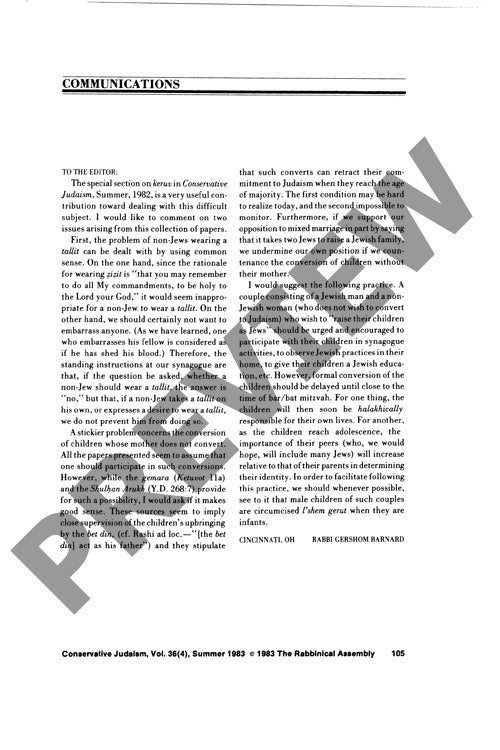Communications
Couldn't load pickup availability
The growing prevalence of interfaith families has created complex challenges for Conservative Judaism's traditional approach to child conversion, particularly when mothers have not converted to Judaism. While established halakhic sources like the Talmud (Ketubot 11a) and Shulhan Arukh (Y.D. 268:7) provide foundational guidance, their practical application in modern contexts raises significant concerns about rabbinic supervision and long-term religious commitment. Through comparative analysis of traditional requirements and contemporary family dynamics, this research reveals the limitations of early childhood conversion protocols and their impact on both religious observance and interfaith family relationships. A delayed conversion model, postponing formal conversion until near bar/bat mitzvah age, emerges as a more effective solution that balances halakhic integrity with pastoral needs. This approach enables children to naturally develop Jewish identity through synagogue participation, home observance, and Jewish education while acknowledging the crucial role of peer influence during adolescence. For male infants, circumcision l'shem gerut is recommended to facilitate future conversion processes. The findings contribute to ongoing discussions of keruv (outreach) initiatives while offering a pragmatic framework for addressing the complex realities of contemporary Jewish life.

More Information
-
Physical Description
-
Publication Information
Published 1983
ISBN
-
Publication Credits

